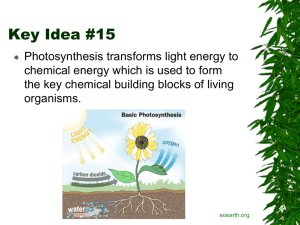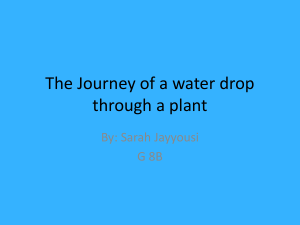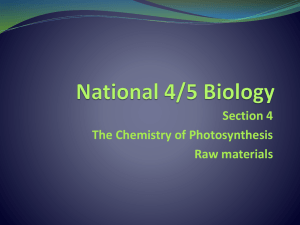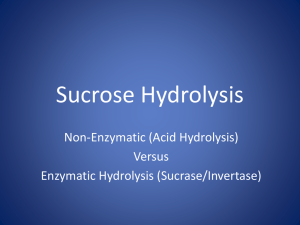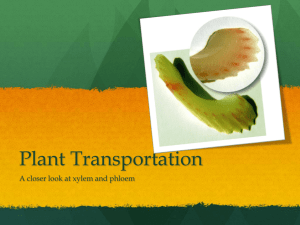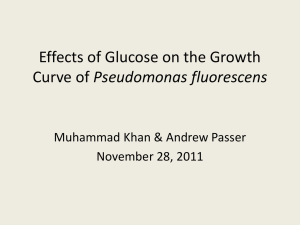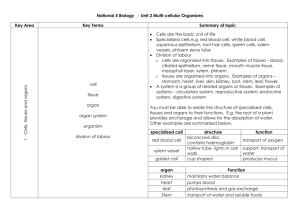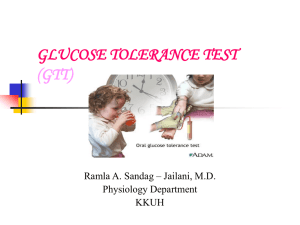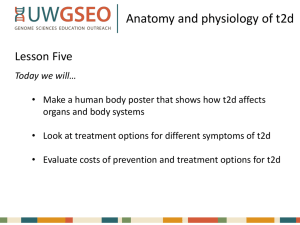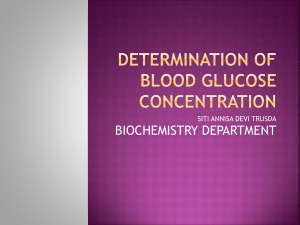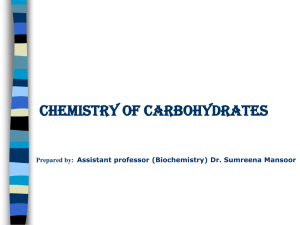Plant Organ Systems
advertisement
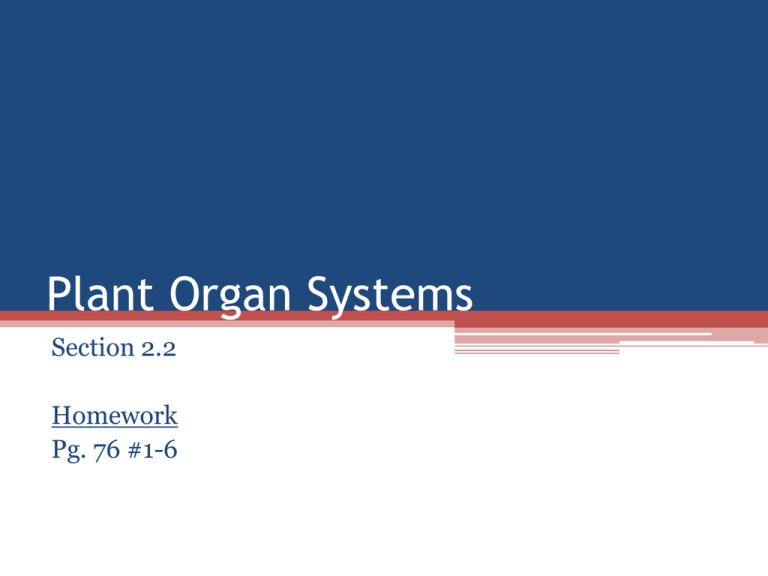
Plant Organ Systems Section 2.2 Homework Pg. 76 #1-6 Quick review 1. How many organ systems are in a plant? 2. Identify the organs in each of these systems. 3. What are xylem and phloem? a) How are they similar? b) How are they different? 4. Cross-section of a leaf: http://www.purchon.com/biology/flash/leaf.swf Plant organ systems ROOT SYSTEM • anchor the plant • absorb water and minerals from soil • store food SHOOT SYSTEM • • • • photosynthesis support transport substances produce flowers for sexual reproduction Vascular tissue allows transport between the root and shoot system. Xylem Phloem Dead, hollow tissue Living tissue Transports water and minerals upwards from roots Transports sugars produced by leaves, to the rest of the plant The importance of water ...in plants: • turgor pressure in cells • dissolving/transporting nutrients • reactant for photosynthesis Transport of Water Transport of H2O from roots to shoots through the xylem occurs by two forces, which act in the same direction: Water transport Pushing force root pressure Pulling force capillary action 1) Root pressure: The pushing force • Water and dissolved minerals move into roots by osmosis. ▫ generates pressure to push water upwards Tiny root hairs increase the surface area of the root. 2) Capillary action: The pulling force • Capillary action - The ability of liquids to move against gravity through narrow spaces Transpirational Pull Cohesion and Adhesion Both of these factors influence the water’s ability to move up the xylem against gravity Transpiration – The evaporation of water vapour from the leaf, through the stomata ▫ pulls on water at the top of the plant Transpirational pull is felt even at the roots. How? It is enhanced by the properties of water: cohesion and adhesion Two properties of water: • Cohesion Allows water to move upwards by capillary action. ▫ Water molecules stick to other water molecules. ▫ This is due to dipole – dipole interactions • Adhesion ▫ Water molecules stick to sides of the xylem. Guard cells control when the stomata are open and closed. When do the guard cells close? • when the plant cannot afford to lose too much water ▫ hot, dry days ▫ high wind speeds Effect of various factors on transpiration http://www.knowledgebank.irri.or g/ewatermgt/courses/course1/mod ules/module02/m02l03.htm Transport of sugars a) What chemical process produces sugars in the plant? photosynthesis a) Where are these sugars produced? leaves (palisade cells - chloroplasts) Plants photosynthesize to convert the Sun’s energy into a useable form - glucose. CO2+ H2O + light energy glucose + O2 The energy in glucose is then accessed by cellular respiration (in mitochondria). glucose + O2 CO2+ H2O + energy Cells in every part of the plant need glucose. Glucose must be transported to all organs of the plant. Glucose produced in leaves POSSIBLE FATES OF GLUCOSE used right away by nearby cells transported to other parts of the plant (as sucrose); used right away stored in the roots (as starch) when needed In the spring, sucrose from the roots flows upward to help nourish leaf buds. In the summer and fall, leaves produce glucose that moves downward to be stored in the roots. Glucose Glucose Sucrose Sucrose Starch Starch Transport in plants: Recap Video Section 2.2 Concepts to be reviewed: • the function and characteristics of the root and shoot systems • the function and properties of xylem and phloem tissue • the tissues and processes involved in moving water and nutrients • the movement and storage of the products of photosynthesis Homework Read 2.2 • Pg. 76 #1-6


